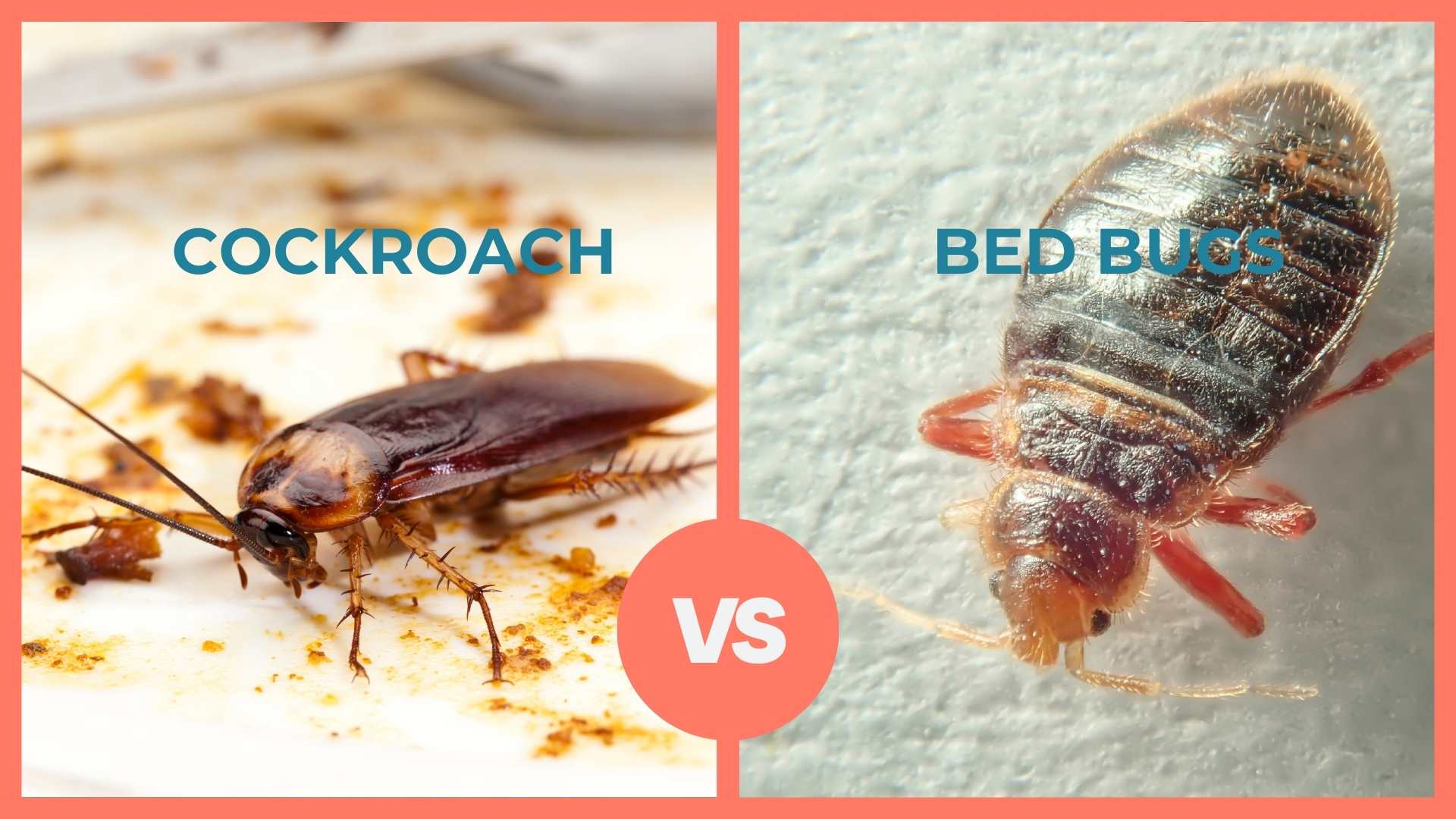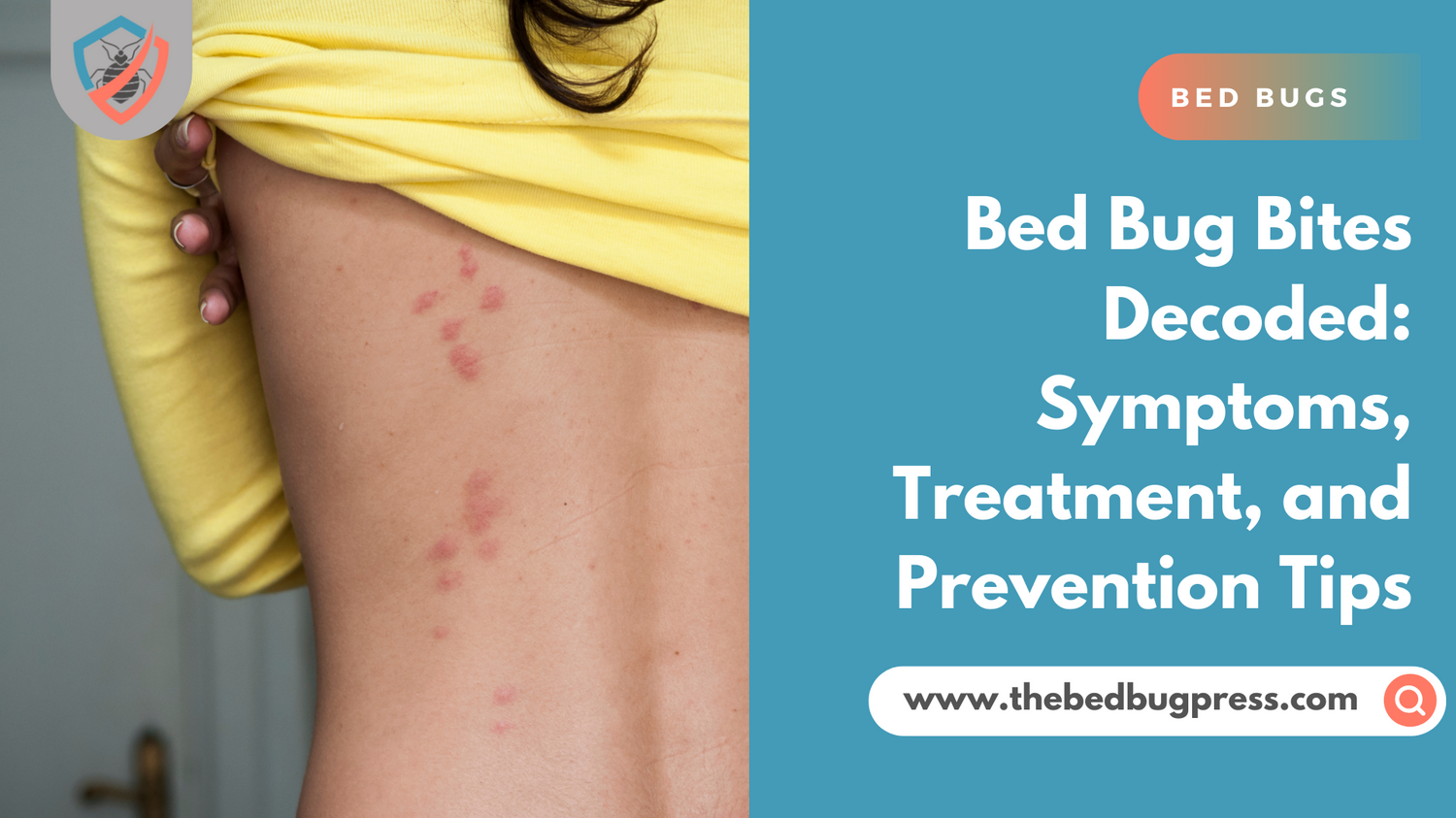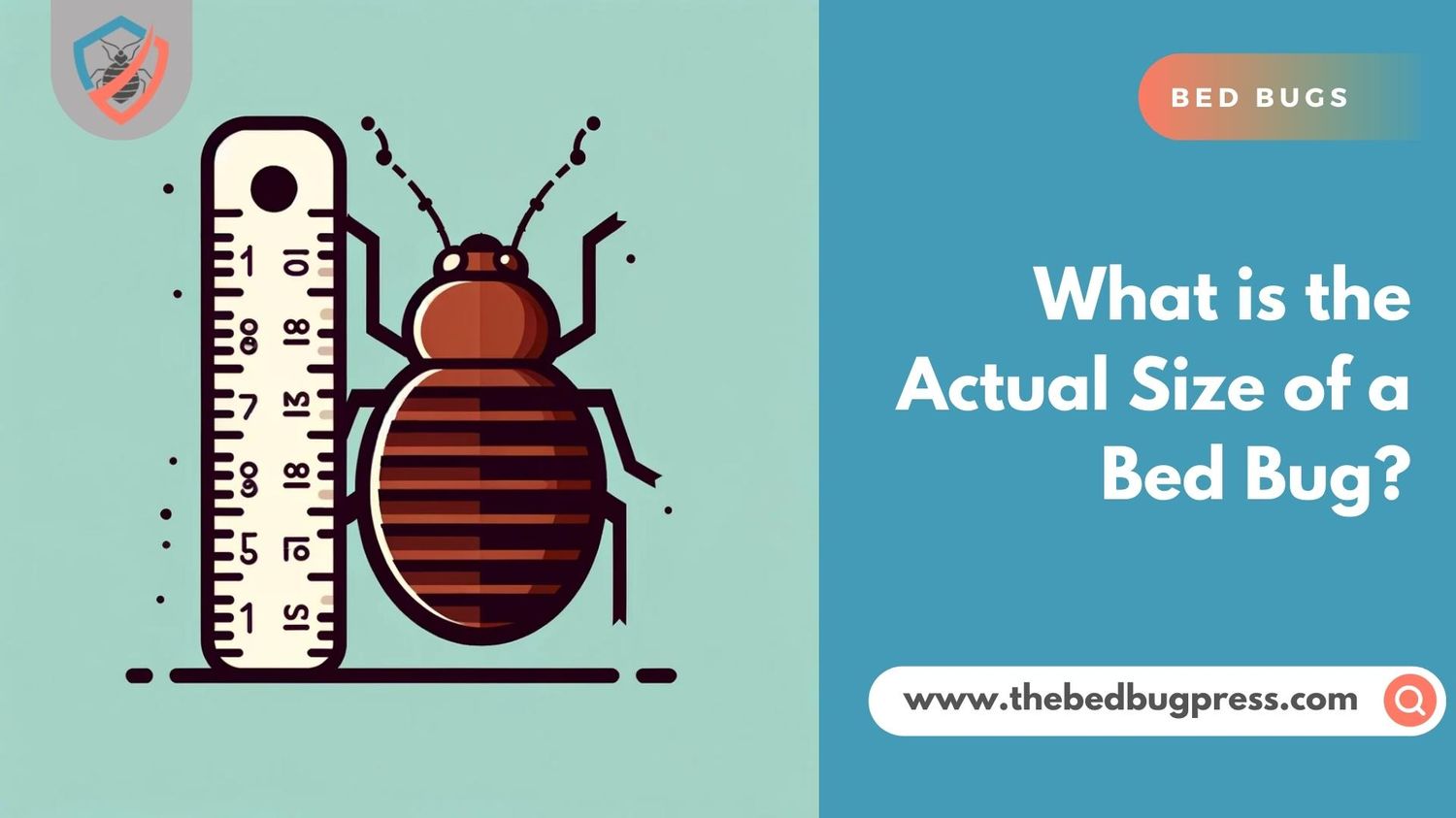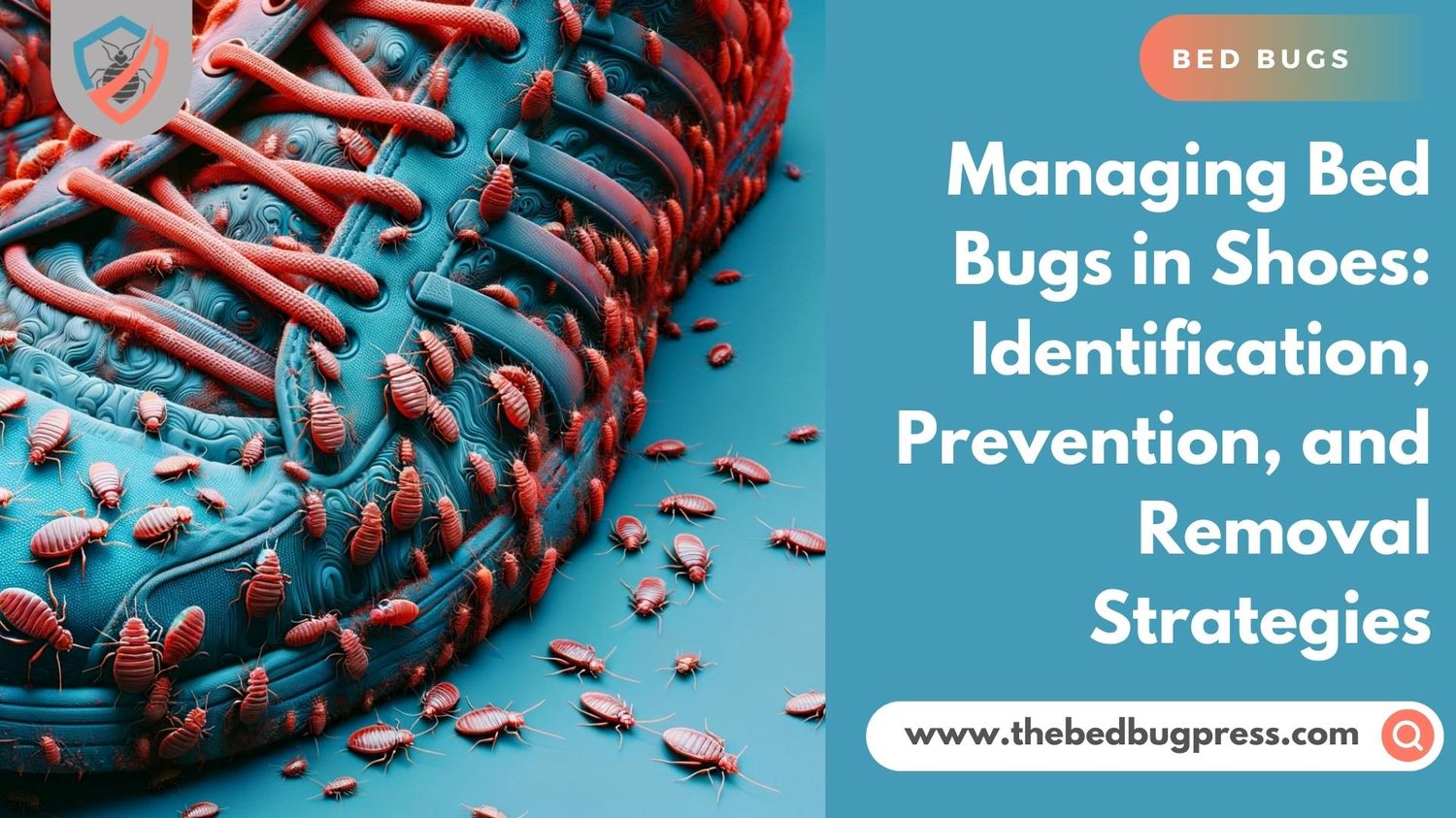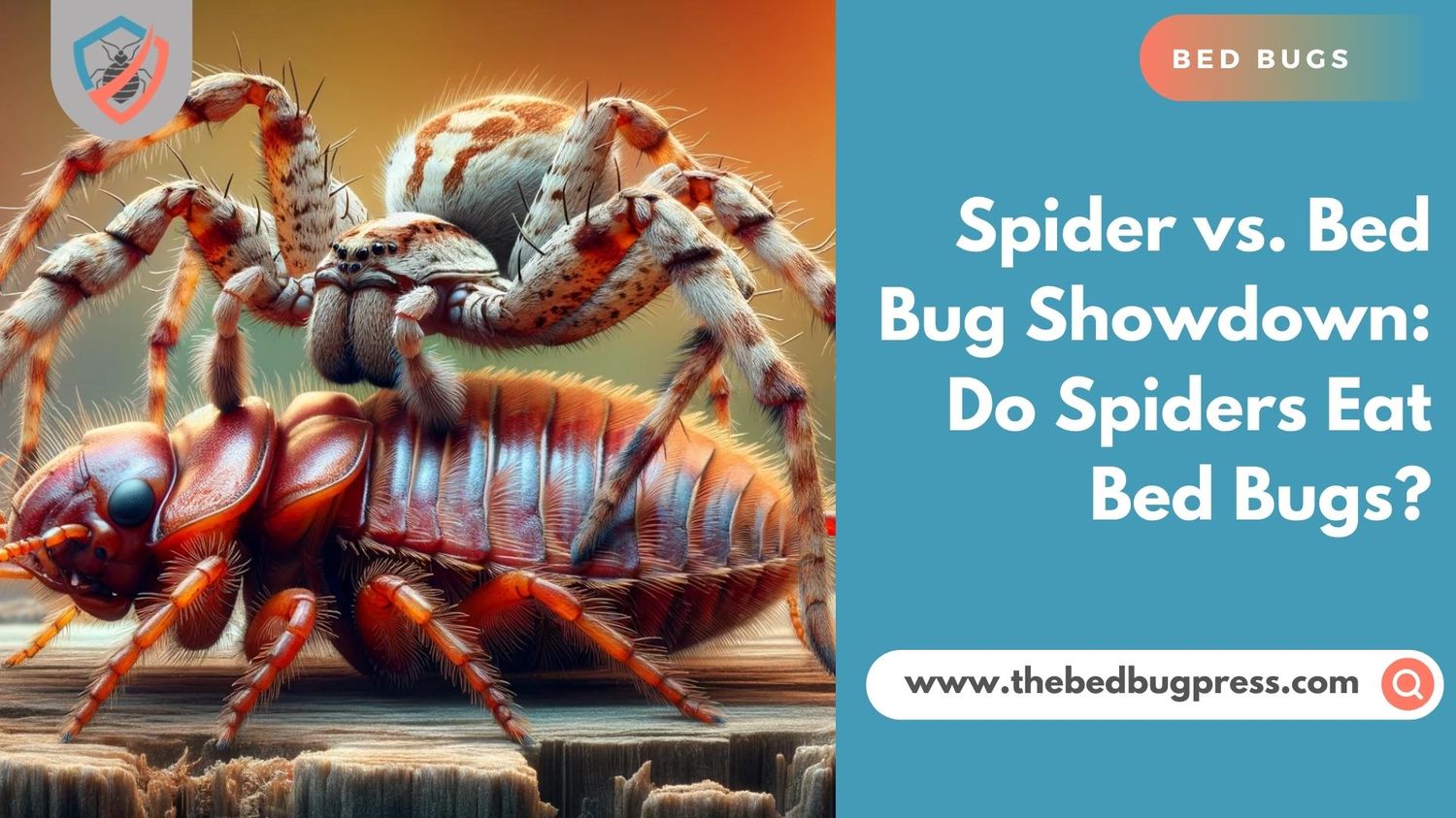While they occupy different areas within a home, their feeding habits differ significantly. Bed bugs feed exclusively on blood, while cockroaches are omnivorous scavengers.
Understanding the differences between these pests is crucial for effective eradication and prevention strategies. This article explores the main differences between bed bugs and cockroaches, their feeding habits, bites, and potential health risks they pose.
Key Takeaways
Bed bugs and cockroaches can coexist in the same home, but they occupy different areas and have different feeding habits.
Bed bugs feed on blood, while cockroaches eat garbage and are omnivorous scavengers.
Bed bugs bite frequently and cause red, swollen, and itchy reactions, while cockroaches rarely bite unless there is no food available.
Bed bugs do not spread diseases, but cockroaches can spread diseases such as dysentery and salmonella.
Bed bug vs cockroach, what is the main difference
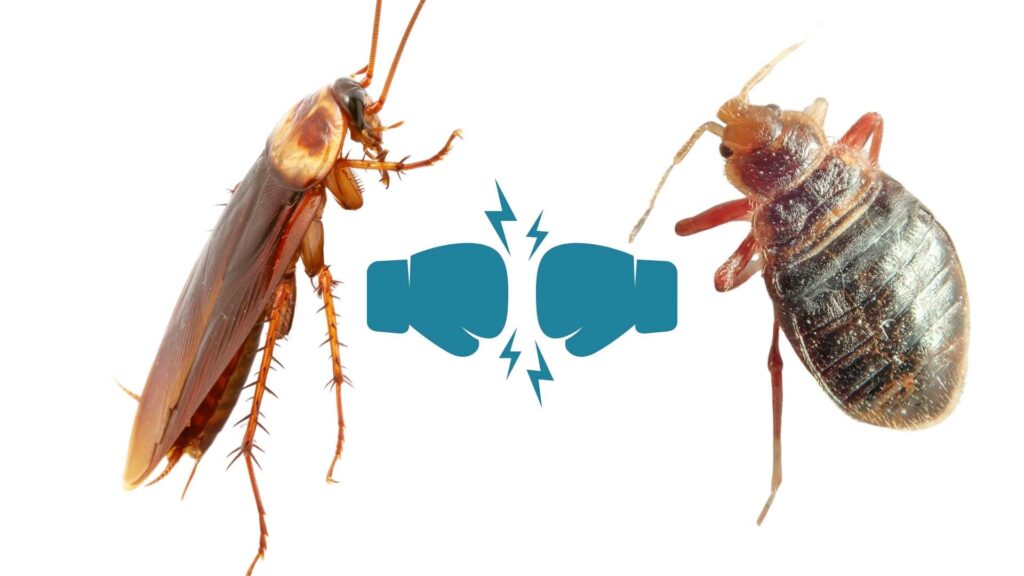
The main difference between bed bugs and cockroaches lies in their feeding habits. Bed bugs, scientifically known as Cimex lectularius, are tiny, wingless insects commonly found in bedrooms, schools, and buildings. They have oval, flat bodies that grow to about 3/16 in (9.5 mm) long. Bed bugs feed exclusively on blood, and they can feed on any mammal, including humans, pets, and rats. They require the nutrients found in mammalian blood and do not consider other bugs as a food source due to their harder outer shells.
Unlike bed bugs, cockroaches belong to the order Blattodea and have various species, including Australian, Oriental, German, and American cockroaches. The largest species, the American cockroach, has an average length of 4 cm (1 ½ in). Cockroaches are commonly found in places where food is stored, such as restaurants and grocery stores. They are omnivorous scavengers and can eat a wide range of food, including sweet things, meaty leftovers, other bugs, and random items. While cockroaches may occasionally feed on bed bugs, it is not enough to eliminate a bed bug infestation.
Do roaches eat bed bugs
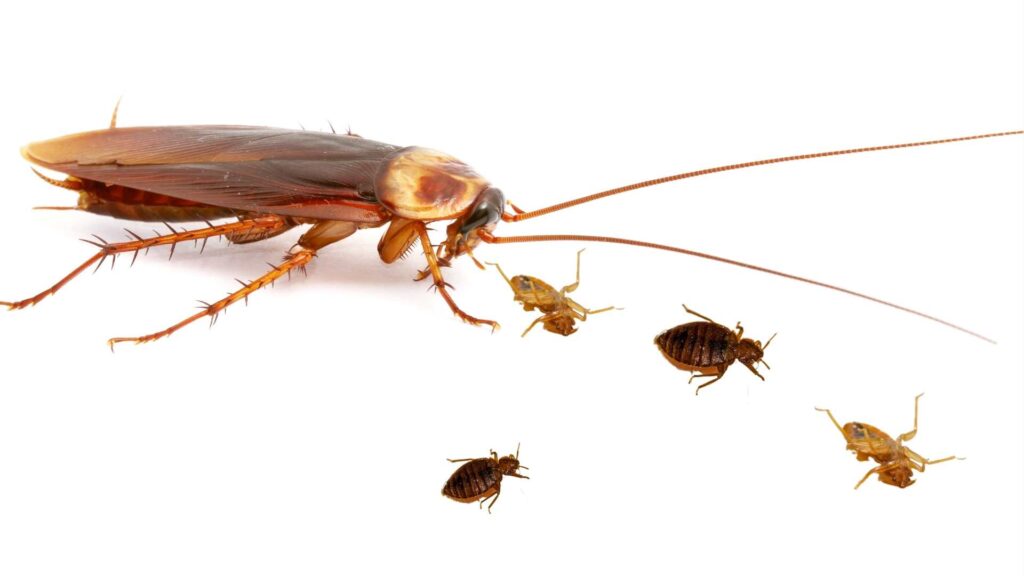
Roaches have been known to consume bed bugs, although it is not a primary part of their diet. Roaches are omnivorous scavengers that feed on a variety of organic matter, including dead insects like bed bugs. However, it is important to note that roaches are not specialized bed bug predators.
Roaches are opportunistic feeders, primarily consuming decaying plant and animal material, as well as crumbs and other readily available food sources. While foraging for food, they may come across bed bugs and consume them. However, it is crucial to understand that relying solely on roaches to control a bed bug infestation is not a reliable or effective strategy.
Professional pest control strategies are typically required to effectively manage and eliminate bed bug infestations. These strategies may include heat treatments, the use of pesticides, and thorough cleaning and sanitation practices. It is essential to address the root cause of the infestation and implement comprehensive measures to prevent re-infestation.
Cockroach bites vs bed bug bites
Cockroach and bed bug bites differ in their frequency, appearance, and potential health risks. While cockroach bites are relatively rare and often mistaken for other skin irritations, bed bug bites are more common and easily identifiable. Bed bugs are blood-feeding insects that bite humans during the night, leaving behind linear or clustered patterns of red, swollen, and intensely itchy bites on exposed skin. On the other hand, cockroaches are more inclined to feed on food residues and organic matter rather than biting humans. When they do bite, their bites tend to be irregularly shaped and may cause localized redness and itching.
To better understand the differences between cockroach and bed bug bites, the following table provides a comparison:
| Cockroach Bites | Bed Bug Bites | |
|---|---|---|
| Frequency | Rare | Common |
| Appearance | Irregularly shaped | Linear or clustered patterns |
| Symptoms | Localized redness and itching | Redness, swelling, and intense itching |
| Health Risks | Not known to transmit diseases | Potential for allergic reactions and secondary skin infections; known vectors of various diseases |
It is important to identify the culprit of the bites for appropriate pest control measures and, if necessary, seek medical attention for bed bug bites.
Does roach spray kill bed bugs
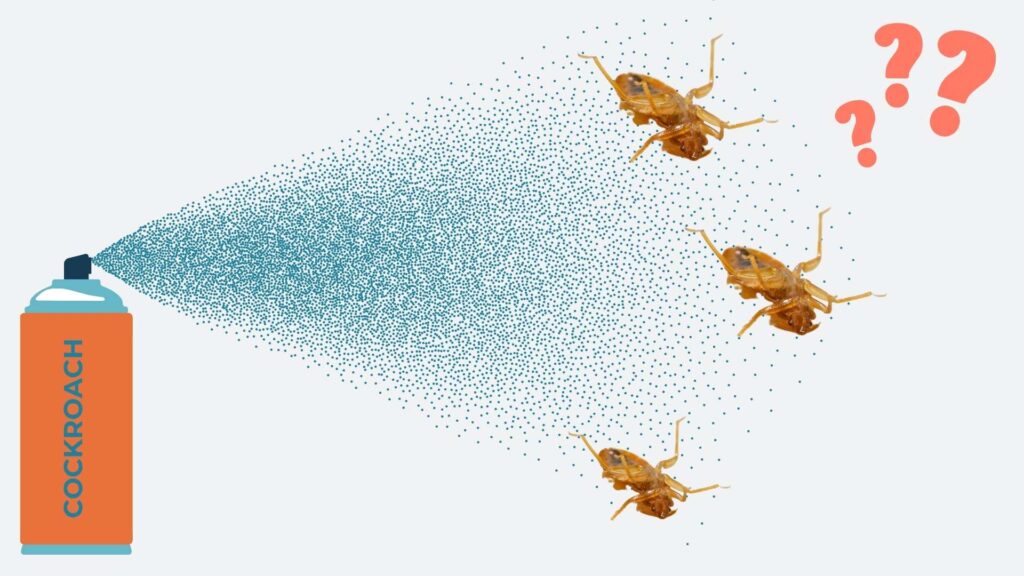
Roach spray’s effectiveness in eliminating bed bugs is limited and not recommended for bed bug control due to the insects’ resistance and hiding behaviors. While roach sprays may contain active ingredients that can kill bed bugs upon direct contact, they are not specifically formulated or labeled for bed bug control. Bed bugs have developed resistance to some common insecticides found in roach sprays, making them less effective in eradicating an entire bed bug infestation.
Bed bugs are known for their resilience and adaptability to various pesticides over time. They have the ability to hide in cracks, crevices, and hard-to-reach areas, which are not easily accessible to roach spray. Therefore, using roach spray alone is unlikely to provide effective and long-lasting results in the control of bed bugs.
To successfully address a bed bug infestation, it is recommended to use products specifically formulated for bed bug control or seek professional pest control services. These treatments are designed to target bed bugs at all stages of their life cycle and have a higher likelihood of providing effective and lasting control. It is important to follow the instructions on the label carefully and consult with a professional for proper bed bug management.
Does bed bug spray kill roaches
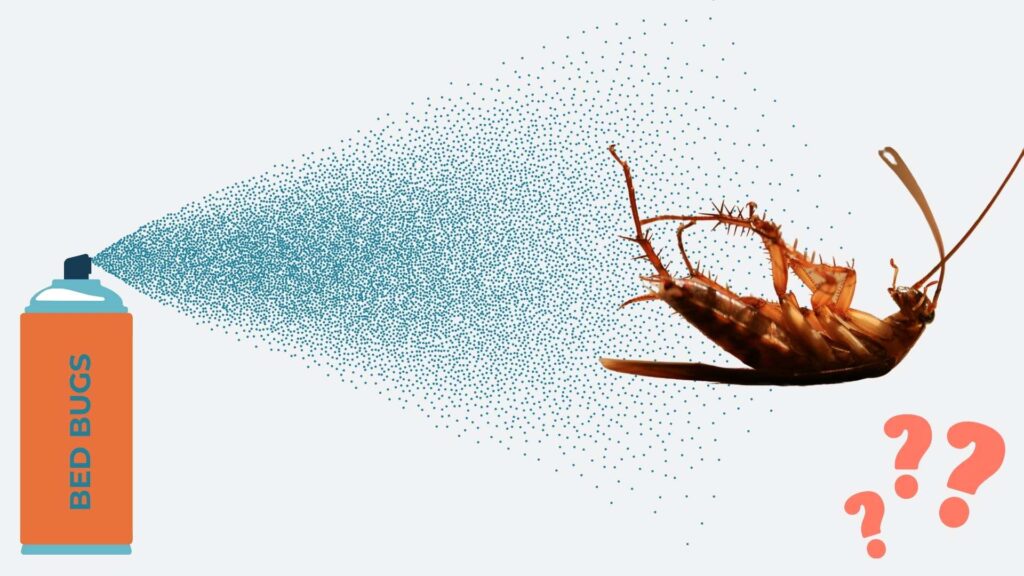
Bed bug sprays, when used properly, can effectively eliminate cockroaches in addition to their primary target. While bed bug sprays are specifically formulated to target bed bugs, they may contain active ingredients that can also be toxic to roaches. However, it’s important to note that bed bug sprays are not the most suitable solution for roach infestations due to differences in biological characteristics and habits between the two pests. Roaches are known for their resilience and adaptability to various pesticides, and they often hide in hard-to-reach areas, making it challenging to eliminate them with bed bug sprays.
To provide a clear comparison, the table below highlights the differences between bed bugs and cockroaches in terms of physical characteristics, behavior, and feeding habits:
| Comparison | Bed Bugs | Cockroaches |
|---|---|---|
| Physical Characteristics | – Reddish-brown color | – Large bodies of 1-2 inches long |
| – Flattened oval shape | – Body color varies from light tan to dark brown | |
| – Short thick antennas | – Flat oval shape | |
| – Size of poppy seeds regardless of age | – Two long forward-pointing antennas | |
| Behavior and Feeding Habits | – More aggressive and bite humans frequently | – Rarely bite humans and feed on trash and leftovers |
| – Blood-sucking pests | – Nocturnal and active during the night | |
| – Nocturnal and active during the night | – Try to find food sources during the night without disturbance | |
| – Feed on blood and hide during the day | – More likely to appear during the day than bed bugs |
Are Bed Bugs or Cockroaches Worse
When comparing the severity of infestations, it is important to consider the potential health risks and challenges posed by both bed bugs and cockroaches.
Bed bugs
Bed bugs, while not known to transmit diseases directly, can cause allergic reactions and secondary skin infections through their bites. The discomfort and sleep disruption caused by bed bug bites can be a major issue. Bed bugs are also notorious for their resilience and ability to hide in cracks and crevices, making eradication challenging. They reproduce quickly and can rapidly infest an entire home if not addressed promptly.
Cockroaches
On the other hand, cockroaches pose health risks as they are known vectors of various diseases and can contaminate food and surfaces with pathogens. Exposure to cockroach allergens can trigger asthma and allergies in sensitive individuals. Cockroaches also reproduce rapidly, and a small infestation can quickly become a major problem. They are known to adapt to various pesticides, making eradication more difficult. Additionally, the mere presence of cockroaches can be distressing and unsanitary, often associated with unclean and unhygienic environments.
baby cockroach vs bed bug
The comparison between baby cockroaches and bed bugs reveals distinct differences in their appearance, behavior, and feeding habits, making it essential to accurately identify and address the specific pest infestation.
Baby cockroaches are typically ¼ inch to ½ inch in length and can grow up to 2 inches as adults, while bed bugs only reach about ¼ inch in length. Baby cockroaches have a cylindrical body shape with long antennae, while bed bugs have a flat, oval-shaped body with relatively short antennae. In terms of color, baby cockroaches can range from light brown to dark brown, while bed bugs are reddish-brown.
In regards to behavior, baby cockroaches are fast runners and tend to prefer dark, moist areas such as kitchens and bathrooms. They are omnivorous, feeding on both plant material and other insects. On the other hand, bed bugs are slow-moving and tend to hide in cracks and crevices, particularly in mattresses, box springs, and furniture near sleeping areas. Bed bugs feed exclusively on blood, while baby cockroaches rarely bite humans unless they are in dire situations, such as a large infestation or food shortage.
Accurately identifying and addressing the specific pest infestation is crucial for effective pest control measures. By understanding the differences in appearance, behavior, and feeding habits between baby cockroaches and bed bugs, homeowners can take appropriate actions to eliminate the infestation and prevent further damage and health risks.
cockroaches that look like bed bugs
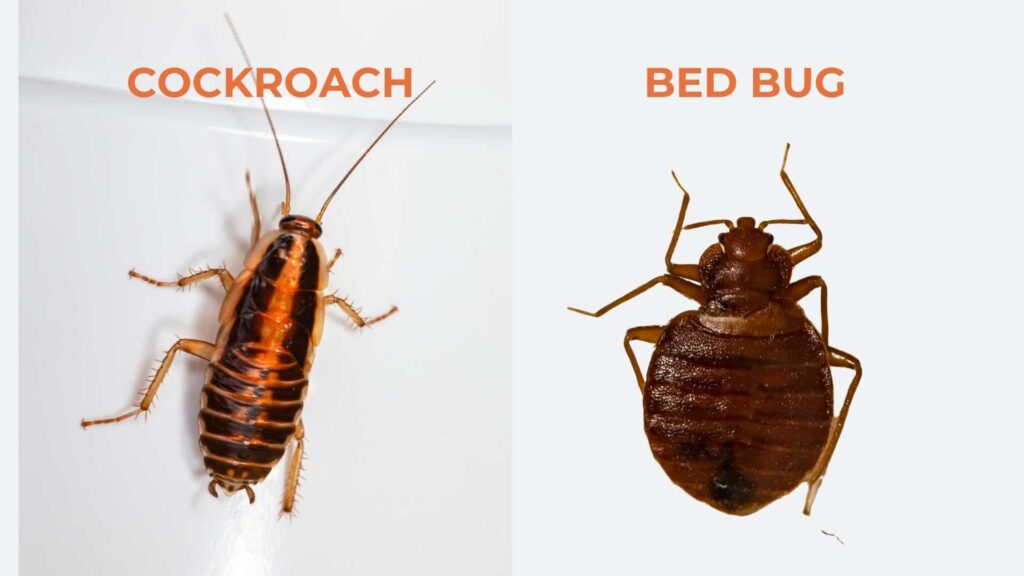
Cockroaches that bear a resemblance to bed bugs can cause confusion due to their similar appearance and behavior. Certain species of cockroaches, such as the German cockroach and the brown-banded cockroach, can be mistaken for bed bugs, especially during their early nymph stages when they are relatively small and have an oval shape. The reddish-brown coloration of some cockroaches adds to the confusion, as it is similar to the color of bed bugs. Additionally, both bed bugs and certain cockroaches are active at night, further contributing to the misidentification.
However, there are key differences between these pests that can help distinguish between them. Bed bugs have a flatter and more oval shape, while cockroaches are broader and more elongated. The antennae of cockroaches are long and prominent, whereas bed bugs have shorter, segmented antennae. Furthermore, bed bugs feed exclusively on blood and leave clustered bite marks on the skin, while cockroaches do not feed on blood and rarely bite humans.
To summarize the differences between cockroaches that resemble bed bugs and actual bed bugs, a table is provided below:
CharacteristicCockroaches that resemble bed bugsBed bugsShapeBroader and more elongatedFlatter and ovalAntennaeLong and prominent short and segmented Feeding Habits Do not feed on blooded exclusively on bloodBiting BehaviorRarely bite humansBite to feed on blood
Proper identification of the pest is crucial for effective pest control, so if there is uncertainty, it is recommended to consult with a pest control professional who can accurately identify and treat the infestation.
If bed bugs live in beds where do cockroaches live
In terms of habitat, while bed bugs primarily reside in beds, cockroaches can be found in a variety of locations within a home. Cockroaches are highly adaptable pests that can thrive in different environments, depending on the species.
One common area where cockroaches are often found is the kitchen, as it provides them with access to ample food sources such as crumbs, spilled liquids, and leftover food. They tend to hide in cracks and crevices near food storage areas and appliances.
Bathrooms are another favored habitat for cockroaches, particularly if there is moisture and plumbing access. They may hide in drains, pipes, or behind bathroom fixtures.
Dark and damp areas like basements and crawlspaces also offer suitable conditions for some cockroach species, and they often seek shelter in these environments.
Additionally, cockroaches can be found in garages, utility rooms, wall voids, outdoor habitats like sewers and garden mulch, and even inside household appliances and trash areas.
It is important to note that different cockroach species have different habitat preferences, and proper sanitation, sealing cracks and crevices, and eliminating food and water sources are essential in preventing and controlling cockroach infestations.
Conclusion
In conclusion, understanding the differences between bed bugs and cockroaches is essential for effective pest control and prevention strategies.
While both pests can coexist in the same environment, they have distinct feeding habits, behaviors, and potential health risks.
Bed bugs feed exclusively on blood and cause frequent biting, while cockroaches are omnivorous scavengers that rarely bite.
Cockroaches can transmit diseases, while bed bugs do not.
Recognizing these differences is crucial for targeted eradication methods and ensuring a pest-free living environment.
Frequently Asked Questions
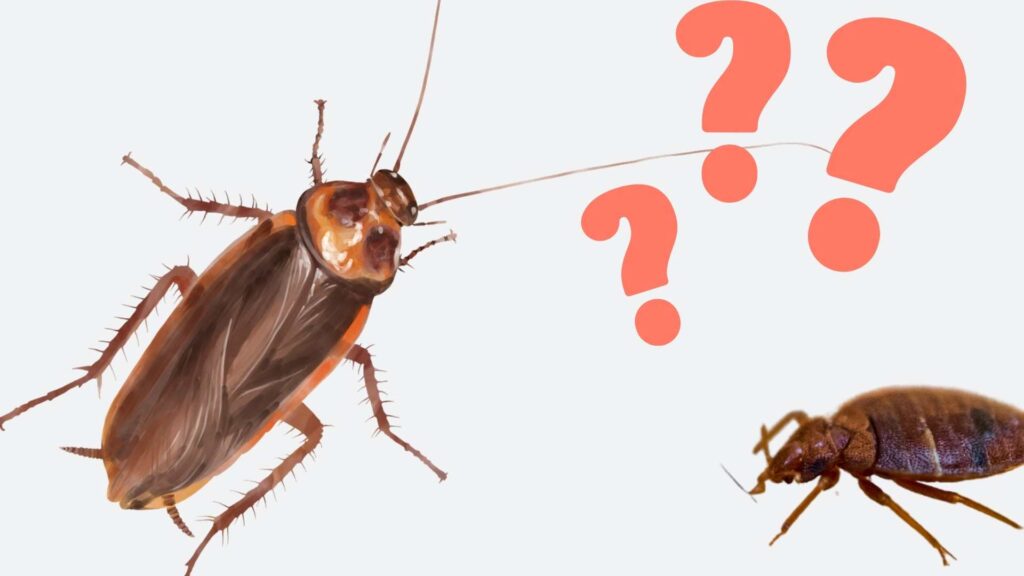
1. What are the main differences between bed bugs and cockroaches?
Bed bugs primarily feed on blood, while cockroaches are omnivorous scavengers.
Bed bugs have flat, reddish-brown bodies with short antennae, while cockroaches have elongated, dark brown bodies with long antennae.
2. Do bed bugs and cockroaches coexist in the same environment?
Yes, bed bugs and cockroaches can coexist in the same home, but they occupy different areas and have distinct habits.
3. What do bed bug bites look like, and how do they differ from cockroach bites?
Bed bug bites appear as clusters of small, itchy, red welts in a linear pattern on the skin.
Cockroach bites are rare, irregularly shaped, and may cause localized redness and itching.
4. Can cockroaches eat bed bugs?
Roaches are omnivorous scavengers and may consume bed bugs, but they are not specialized bed bug predators.
5. Do roach sprays effectively eliminate bed bugs?
Roach sprays are not recommended for bed bug control because bed bugs have developed resistance to some common insecticides found in roach sprays.
6. Can bed bug sprays kill roaches?
Bed bug sprays may be toxic to roaches, but they are not the most suitable solution for roach infestations due to differences in biological characteristics.
7. Which pest, bed bugs or cockroaches, is considered worse in terms of health risks and infestation severity?
Both pests pose health risks, but cockroaches are known vectors of diseases, and their rapid reproduction can lead to severe infestations.
8. How can I distinguish between baby cockroaches and bed bugs?
Baby cockroaches are usually smaller, have translucent wings, and are broader with long antennae, while bed bugs are flat, oval-shaped, and reddish-brown.
9. What should I do if I suspect a pest infestation in my home?
If you suspect a pest infestation, it’s important to consult with a pest control professional for proper identification and effective control measures.
10. Where do cockroaches typically hide in a home?
Cockroaches can be found in various areas, including kitchens, bathrooms, basements, wall voids, and even outdoor habitats like sewers.
11. How can I prevent both bed bug and cockroach infestations in my home?
Implement proper sanitation practices, seal cracks and crevices, eliminate food and water sources, and consider professional pest control services for prevention and control.

